Lunar Expeditionary Program.
The most ambitious lunar program.
This substack post will cover the basics of the Lunar Expeditionary Complex. It was by far the most ambitious lunar proposal to be taken seriously, involving a permanently crewed lunar base, with crew rotated every 12 months.
The origins of this project are in the OKB-1 engineering bureau, after Valentin Glushko finally got control of it, ejected Vasily Mishin, and cancelled the N-1 program. It is also known as “Zvezda”, (meaning “Star”).
Launcher
The project was dependent on Glushko’s huge super-heavy “Vulkan” rocket, the largest launcher in a related family, weighing 4747 tonnes at launch.
You will get an idea of the power from the fact that the upper stage was pretty much an Energia-M.
The payload capacity of Vulkan the launch vehicle, to Earth orbit, with a height of 200 km, was 200 tons. Compare this with a Saturn V’s capacity of about 120 tonnes to low Earth orbit. This allowed for a single launch of Vulkan to deliver a payload weighing 43 tons to lunar orbit, and a payload of about 22 tons to the surface of the Moon.
It is worth noting that the launch site systems were built to handle the Vulkan, and its immense launch thrust, even though in the end they “only” had to cope with Energia.
Apart from Glushko’s launch vehicle, chief designer K. D. Bushuev was responsible for expedition vehicles, and chief designer I. S. Prudnikov was responsible for the permanent base station.
Components
The expeditionary base had six major elements, shown in the following diagram:
1. Lunar Expeditionary ship, (Advanced LK)
2. Laboratory and residential module, for science and general purposes.
3. Lunokhod. An advanced independent crewed rover.
4. Landing stage, (the base of the various large modules).
5. Nuclear power plant, one of the key energy sources for the crew.
6. Laboratory and factory module – this would extract oxygen from lunar rocks.
There was also an advanced LOK, (Lunar orbiting craft).
Notes on the modules:
1. Advanced LK.
The advanced version of the LK Lunar lander would support a crew of three, 31 tons landing on the Moon. This is about double the weight of the Apollo Lunar module. The return stage would fly directly to Earth, with no rendezvous in lunar orbit.
2. Laboratory and habitat.
The residential module would support three cosmonauts, with a living and working area of 35 square metres. The power plant was 3.2 tons, delivering 8 kilowatts of electricity.
3. Crewed Lunokhod.
The crewed moon rover supported a crew of two cosmonauts, and expeditions lasting up to 12 days. The average speed was 5 kilometres an hour, and it would carry 0.2 tons of supplies. It would land in two sections, the base and the crew compartment.
4. Landing stage.
The modules shared a common landing stage; the outstretched legs would fit in a circle 8 metres diameter.
5. Nuclear power plant.
There would be a separate power plant, to supply reserve or additional power.
6. Laboratory and Factory Module.
This module would support one researcher / operator. It would include a greenhouse, an oxygen plant, and a chemical laboratory. Total volume about 100 cubic metres.
The advanced versions of the LK Lander and the LOK will be covered properly in a later edition.
This Issue’s Recommended Link.
From this post onwards, each post will have a link to a great site, and a great image at the end, in a shameless attempt to get you to read the whole thing.
This issue’s link: “Computing in the Soviet Space Program.” An excellent article by Slava Gerovitch, covering the Soviet Spacecraft computers, including one installed on the N1-7L.
https://web.mit.edu/slava/space/introduction.htm
This issue’s great image:
A period illustration, with key statistics, of the “Grasshopper” transporter, used to move the N1, (and later Buran / Energia), to the launch position.
Finally, if you are interested in the Soviet Union Space Program, I think you will enjoy my N1 reference renders, based on measurements taken directly from flight and test hardware. Fourteen 5* reviews!




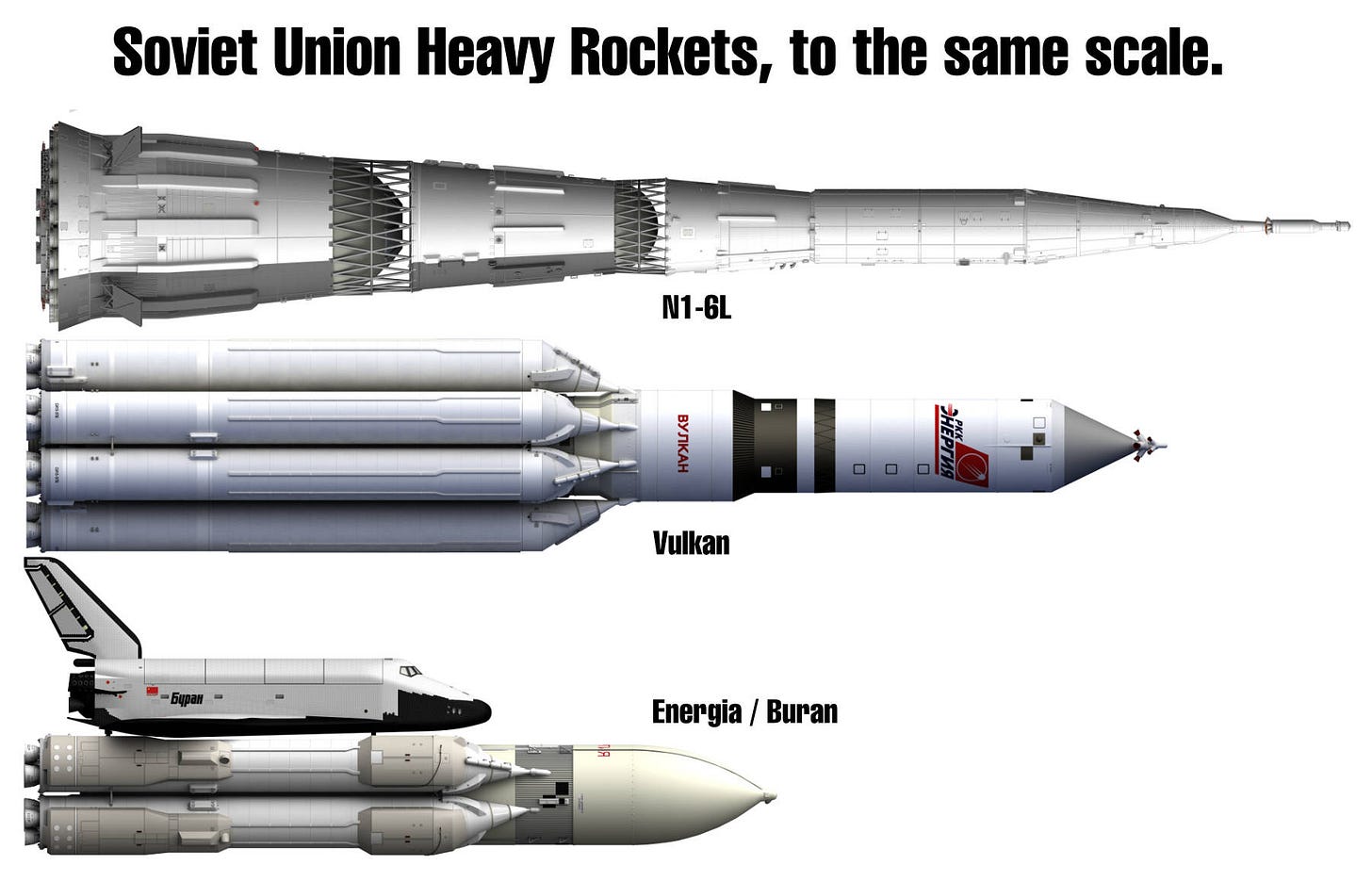
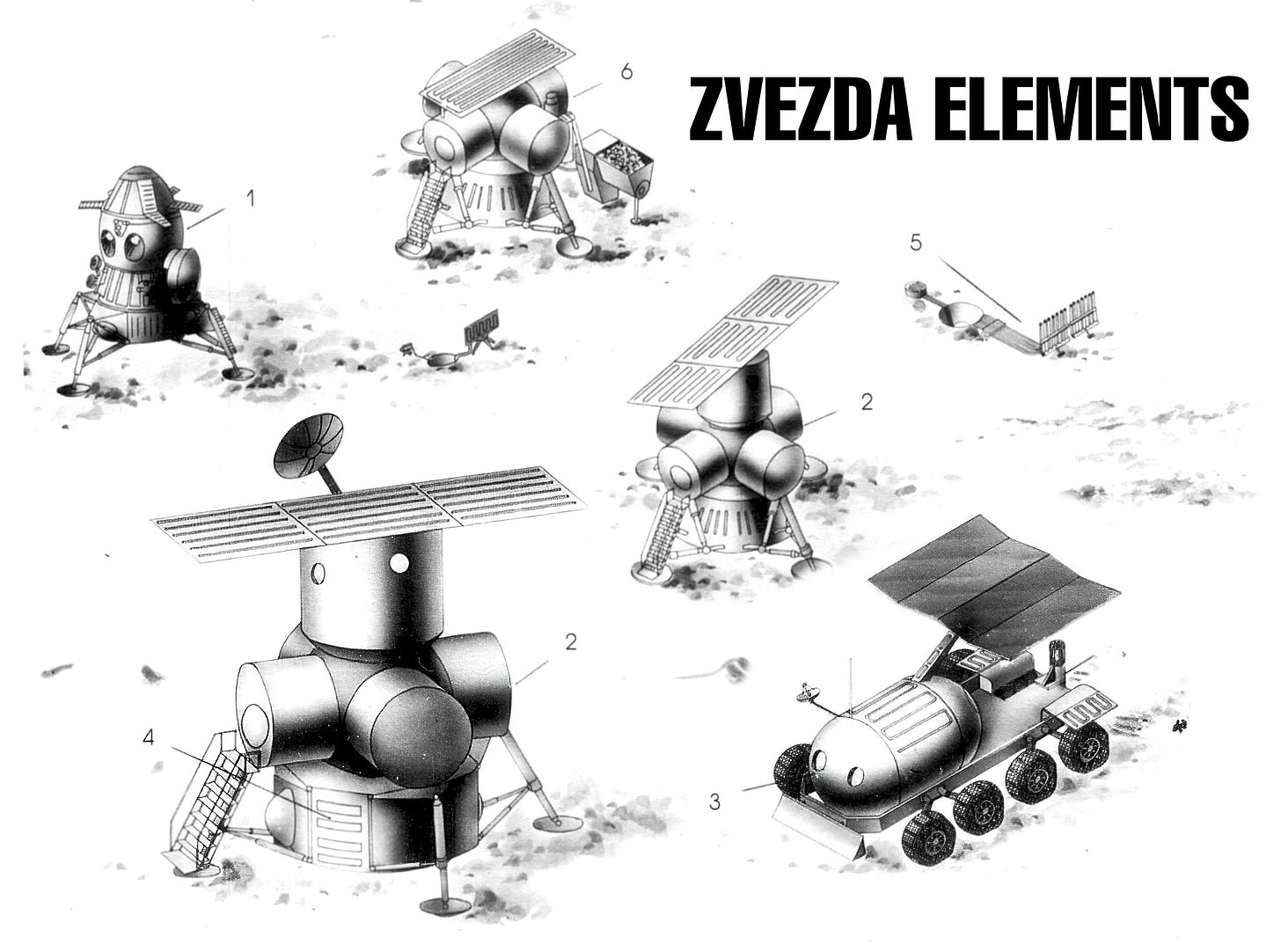
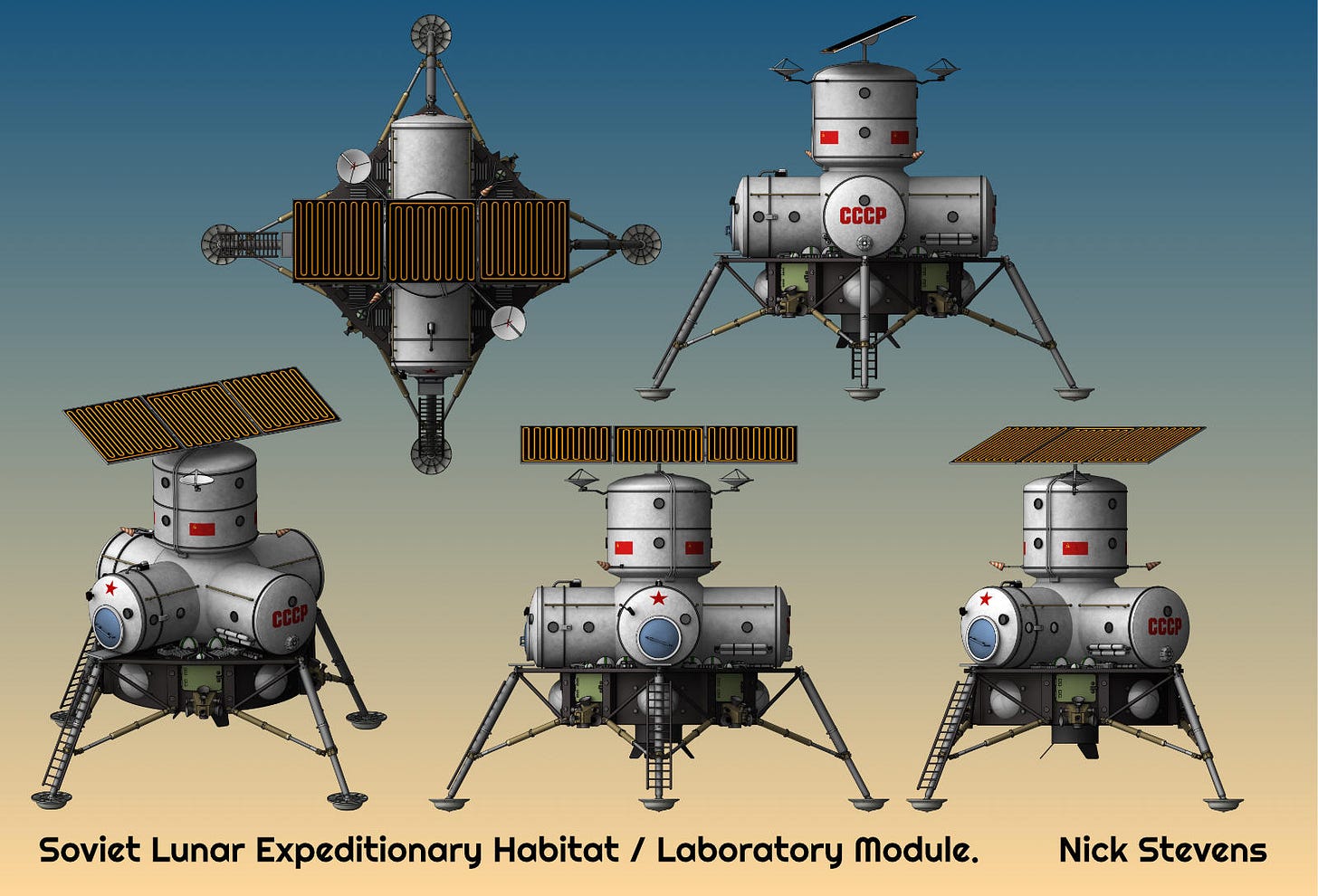


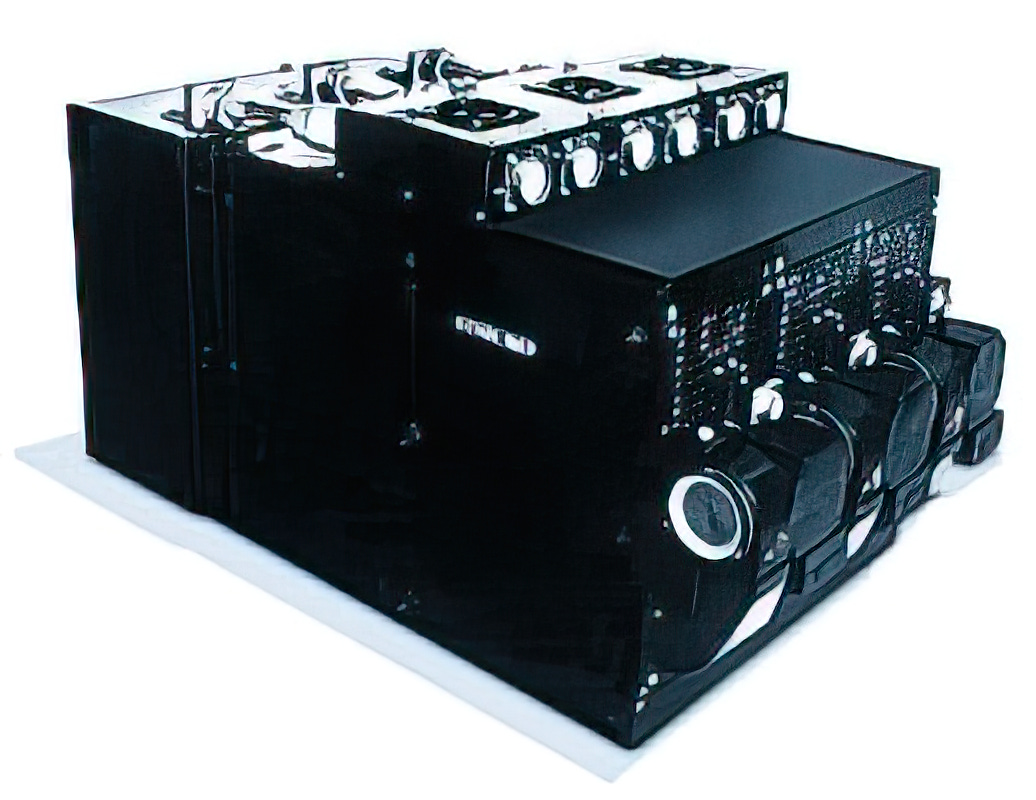

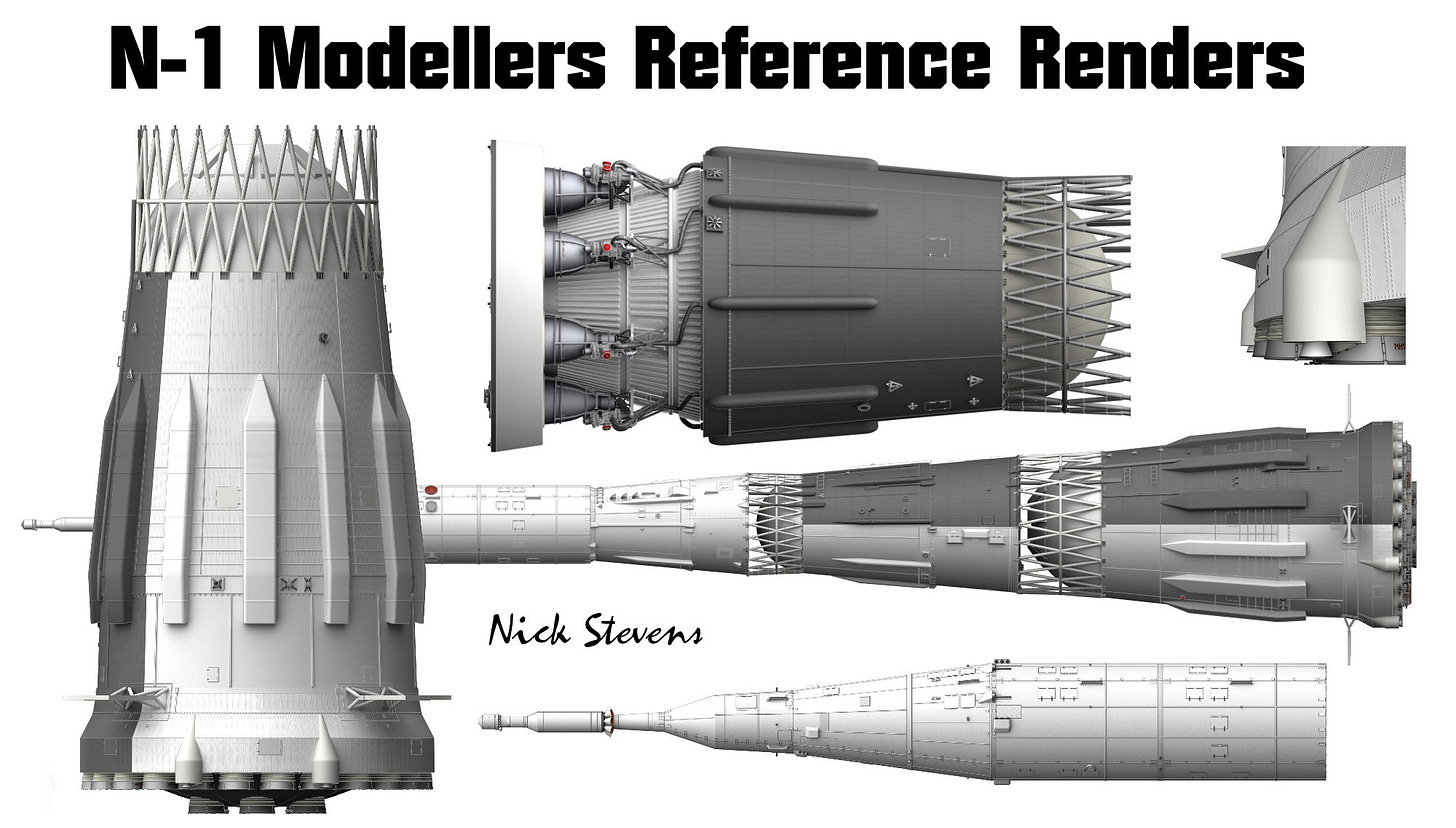
This is such an interesting read! The Lunar Expeditionary Program was an incredibly ambitious vision.
Quick question: How many Vulkan launches would it take to place all these components on the Moon?
Just doing a rough estimate, it looks like at least 5 launches would be needed, based on the Vulkan's payload capacity of 22 tons to the lunar surface.